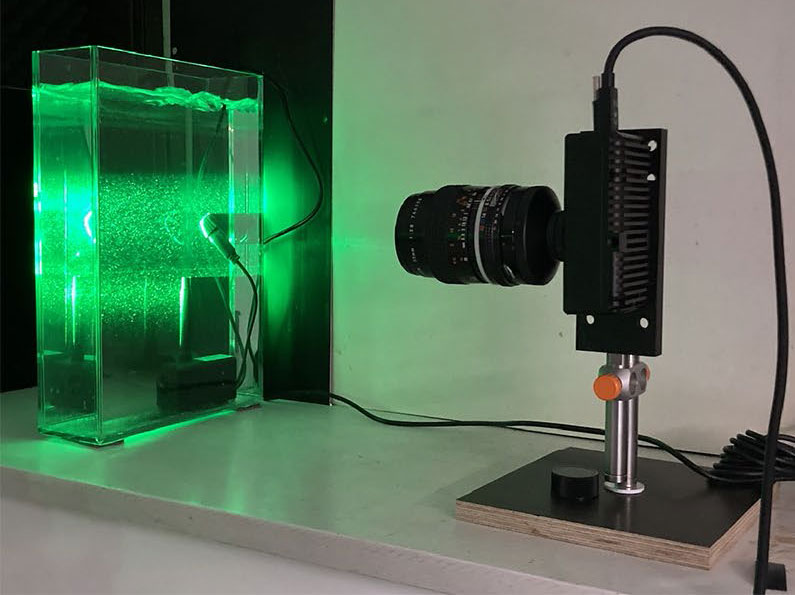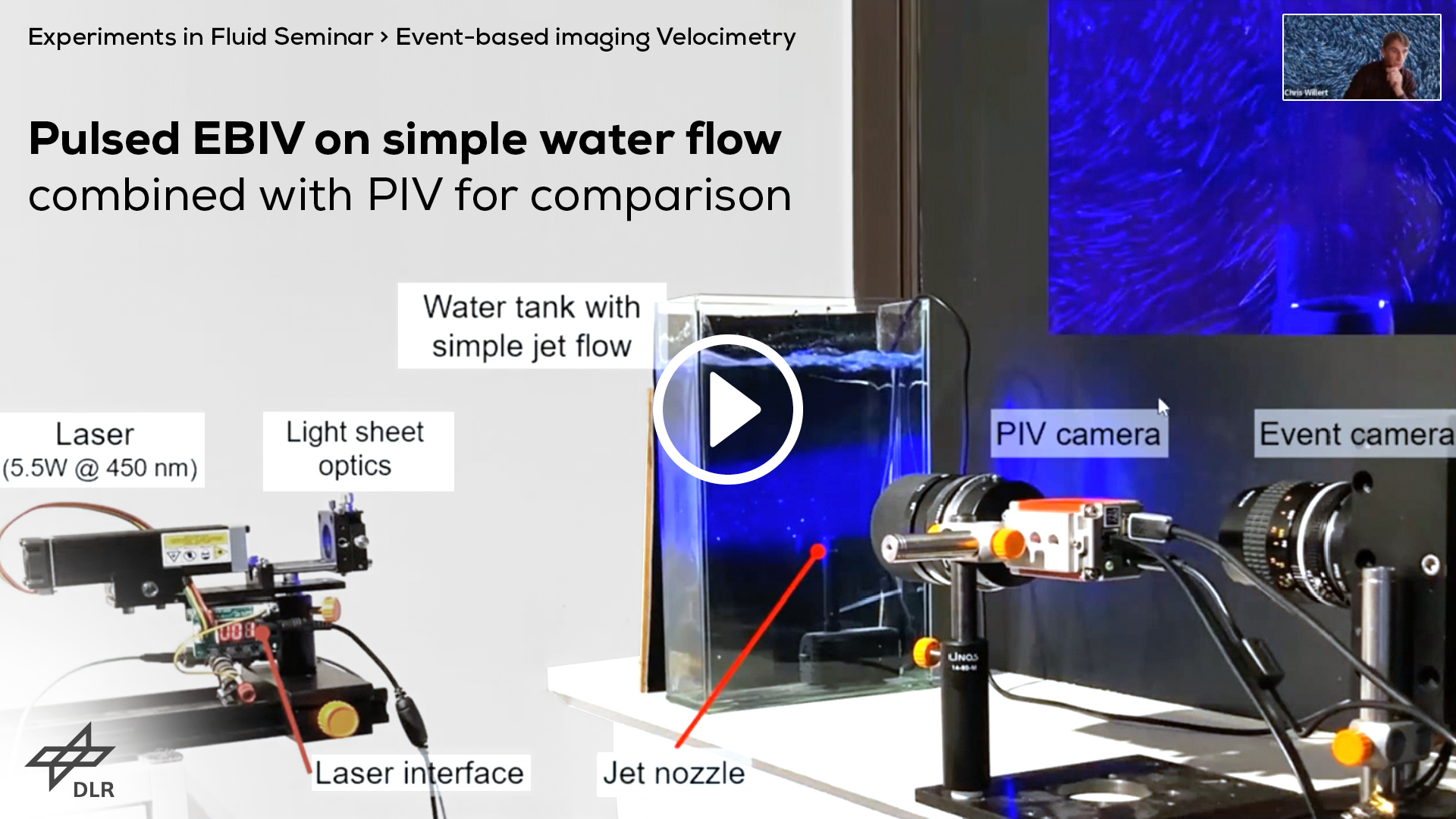EVENT-BASED VISION ENABLES HIGH EFFICIENCY REAL-TIME FLOW VISUALIZATION
Real-time
flow visualization
High resolution
flow field data
μs resolution
of tracked particles
Researchers at the DLR Institute of Propulsion Technology of the German Aerospace Center explore the possibilities of harnessing event-based vision (EBV) for capturing flow fields in both air and water flows. Using a laser or other light source for illumination, the event-camera captures the motion of small (micrometer) sized particles carried with the flow.
Maps of the evolving flow field can then be obtained from the event tracks produced by particles. Compared to previous studies, a much higher number of particles can be tracked simultaneously, resulting in highly resolved velocity maps.
This has been made possible through recent advances in EBV hardware development featuring high-speed, high resolution systems such as the EVK4 HD by Prophesee.
Event data produced by small particles in a turbulent water flow
(The field of view is about 55 mm wide and 30 mm high)
“The flow measurements clearly demonstrate that EBIV enables measurements in close proximity of surfaces where PIV and other frame-base imaging methods generally have problems with excessive light scatter. As surfaces generally do not move, they do not trigger any intensity-change events and hence are not visible by the event camera. Another advantage is that individual particles can be identified efficiently using the contrast maximization approach used for the recovery of the motion field.”
– Willert, C.E., Klinner, J. Event-based imaging velocimetry: an assessment of event-based cameras for the measurement of fluid flows. Exp Fluids 63, 101 (2022)
Turbulent flow in a water tank reconstructed from captured event data
Flow velocity measurement
Within the ongoing study a variety of aspects from event-capture to algorithms capable of recovering flow velocity information are being explored. So far flow measurements of up to several meters per second have been demonstrated on a field of view of 100 mm width.
The high temporal resolution of the event data provides velocity information nearly equivalent to imagery obtained with costly high-speed cameras operating beyond 1000 frames per second.
The hardware demands for event-based flow velocimetry are minimal: it only requires an event camera and a small laser with light sheet forming lenses to capture the motion of small particles moving with the flow. This makes the system compact and very portable.
The “table-top” setup on the right was used to record the event data and flow fields above. Here, the water is “seeded” with small (10 µm) particles that scatter light from a thin (1 mm) laser sheet, that is introduced from the side.
Owing to the high sensitivity of the event camera, a laser power of less than 1 watt is already sufficient to capture the event imagery shown above.
Event-based vision has many advantages for fluid flow measurement.
- It is suitable for real-time flow visualization – The event tracks produced by the movement of the particle field directly visualize the flow field without the need of further processing.
- Event-records obtained from fast moving flows can readily be played back in “slow-motion” mode to visualize the flow dynamics.
- Event cameras are tolerant against intensity variations within the light sheet because its sensors only react on intensity changes.
- They are also tolerant against laser flare (light scatter on surfaces) and non-uniform background intensity. Their tolerance against high background intensity allows particles to be tracked in bright environments.
- Particle event tracks are clearly distinguishable from the background and can be extracted either by feature detection or by using the clusters formed in the motion-compensation analysis.
ABOUT DLR INSTITUTE OF PROPULSION TECHNOLOGY
The Institute of Propulsion Technology is strictly focused on the improvement of gas turbines in aviation and electric power generation by medium- to long-term exploitation of the inherent technical potentials. It is a part of DLR which is the Federal Republic of Germany’s research centre for aeronautics and space, conducting research and development activities in the fields of aeronautics, space, energy, transport, security and digitalization. At the DLR Institute of Propulsion Technology the department of Engine Measurement Systems is devoted to the development and application of laser optical measurement and imaging techniques for the aerothermodynamic investigation of aero engine components and related fields. The development and adaption of new measurement techniques contributes to the desired progress in turbomachinery research, with their application both at the test rigs of the Institute as well as on the facilities of external customers.
ABOUT PROPHESEE INVENTORS COMMUNITY
Since 2014, a network of researchers, start-ups and companies have shown incredible imagination and innovation using Prophesee’s neuromorphic vision technologies.
This has created an Event-Based Vision ecosystem of inventors sharing their work and ideas. Their creativity with Prophesee’s technologies inspires us.
We are gathering them here to inspire future inventors in turn, in the hope that, like the projects here, they create something new together and reveal the invisible.
Don’t miss a bit,
follow us to be the first to know





